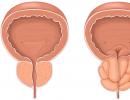Air yoga (anti-gravity, air yoga) - relieves disease and normalizes the emotional state
Air yoga is a kind of ordinary yoga, only classes are held not on a hard surface, but in the air, thanks to which it is possible to get rid of many diseases and normalize the emotional state.
Aeroyoga: what is it ^
Antigravity yoga originated from Christopher Harrison, a choreographer, gymnast and dancer. It was he who noticed that after difficult performances and long flights, it was possible to relieve fatigue by sitting upside down in a special hammock, which he built on his own.
In addition, according to him, in this way it is possible to increase the mood, straighten the body and feel a surge of energy, so subsequently his technique spread among other people quickly enough.
Air yoga: benefits and harms

Air yoga (Fly Yoga, yoga in the air) represents several areas at once: gymnastics, meditation, classical yoga and flight simulation. It is thanks to this that it is possible to use all organs and systems of the body, as well as improve well-being and relieve the effects of stress.
What are the benefits of aero yoga:
- The processes of blood renewal are started, blood circulation is improved;
- Tension and pain in the lower back disappears;
- They stop bothering with pain before and during menstruation;
- It is possible to get rid of the feeling of tightness and stiffness in the spine;
- The cardiovascular and respiratory systems are strengthened;
- Muscle tone increases;
- It turns out to remove body fat in problem areas and generally reduce weight;
- Harmony with the outside world is achieved.
Indications for practicing air yoga

There are certain problems that can be solved with aerial yoga:
- Rehabilitation after illness and injury;
- Disability, cerebral palsy;
- The prolapse of the pelvic organs;
- Climax;
- Bronchitis and asthma;
- Diabetes;
- Poor circulation;
- Insomnia, frequent headaches;
- Haemorrhoids;
- Chronic fatigue;
- Back pain (except for displacement of the intervertebral discs).
Contraindications

Despite all the benefits to antigravity yoga, there are contraindications to it:
- Atherosclerosis;
- Thrombosis of the brain;
- Thrombophlebitis;
- Displacement of the intervertebral discs;
- Enlargement of the thyroid gland;
- Weakening of the walls of the blood vessels of the eyes and nose;
- Traumatic brain injury received less than a year ago;
- Hypertension.
Taking into account such important details, it is impossible to practice aero yoga on hammocks, because such exercises often involve being in an upside-down position, as a result of which health can significantly deteriorate if there are certain health problems.
Choosing a hammock ^

What kind of hammock is needed for air yoga
The hammock must be made of durable fabric, and you can fix it either on horizontal bars, or between trees with hooks or carabiners. In addition, it can be equipped with handles attached to ropes for convenience, and it can also include a part height adjustment function.
Such a construction for asanas is often sold in specialized stores, and you can buy it for a very reasonable price.
Ceiling and classroom requirements
The distance on the ceiling between the bolts should be 60 cm. The minimum ceiling height is 2.2 m (the ceiling of a standard apartment is ideal). Standard installation belts are suitable for ceilings up to 3m, higher ceilings require XL belts.

Free space around the hammock must be at least 60 cm
- In the fitness room for group exercises, hammocks are staggered about 2 square meters per hammock.
- If there are structures for functional training TRX or punching bags in the gym, they may be suitable for installing hammocks directly on them.
- Dismantling the hammock takes just a minute.
Height adjustment
Adjust the height of the hammock for your height:
- The main part of the hammock, which hangs freely, should be at hip level. Adjust the height using the adjusting straps and carabiners.
- When performing inverted positions, the head must be at least 5 cm above the floor / ground level.
6 asanas for beginners ^
Many people hesitate to start doing aero yoga, believing that it is too difficult and intimidated by the lack of natural flexibility. But fitness instructors assure that thanks to the hammock, Air Yoga is much easier than the classical directions of yoga. In support of this, we present some asanas from the yoga complex for beginners.
1. Adho Mukha Svanasana (Downward Dog Pose)


- "We go out to the Dog and have a rest."
- The pose promotes blood flow to the head (moreover, less intensely than shirshasana, headstand), due to which the brain cells are renewed, the complexion improves.
- The pose has a beneficial effect on the digestive system, and also stretches the back of the legs, mainly the calf muscles and ankles.
- In a hammock, the dog's downward posture is carried out with the help of a hang, that is, the body hangs down, which provides active traction of the spine along its entire length.
- If it is difficult for people who have been practicing not so long ago to achieve full straightening of the back on the mat, then with the help of a hammock this can be done, even if you have never heard of this asana at all.
- Also, while hanging, it is easier for those involved to relax the muscles of the neck, which relieves the load on the cervical spine.
2. Baddha konsana (Bound angle pose)


What to do with classical yoga:
- The pose effectively affects the organs of the pelvis, abdomen, back, and also has a beneficial effect on the genitourinary system.
- In women who practice this asana, there is a decrease in pain during the cycle due to the normalization of the work of the ovaries and uterus.
- Baddha Konasana is one of the yoga poses that can be performed by women even throughout the entire period of pregnancy (in the absence of contraindications).
Differences when using a hammock:
- The technique of performing the asana is to bring the soles of the feet together and spread the hips to the sides until they touch the floor. Since this asana, like the downward-facing dog pose, is a hanging, and the pelvis is below the level of the feet, even people who, sitting on the mat, cannot lay their hips on the floor due to insufficient opening of the hip joints, open them in a hammock with enviable ease.
- Hovering above the ground gives an unforgettable feeling of flight and elevation above the world. Where else can you be in the role of a kind of "flying Buddha"?
- Since the soles of the feet in a hammock are tied initially, and there is no need to hold them with our hands, we find a use for our hands and fold them into our favorite mudra (a combination of fingers that has a special meaning).
3. Pashchimottanasana (posture of stretching the back of the body)


What to do with classical yoga:
- The pose is needed to stretch the back symmetrically.
- In addition, when it is performed, the gluteal muscles are effectively stretched, the abdominal organs are massaged, having a beneficial effect on the digestive tract; the fat folds on the abdomen and thighs are reduced.
Differences when using a hammock:
- Very often, on the mat, students focus on stretching their legs, and forget about the other important nuances of performing a pose, namely: an even back and "shoulders from the ears."
- And it can be very difficult to wean them from this habit. Therefore, the hammock is the instructor's salvation. The legs are supported by a hammock, so you can forget about them and direct all your attention to stretching your back.
4. Chakrasana (Bridge pose)


What to do with classical yoga:
- The bridge is not the easiest position, even for advanced practitioners. It removes stoop very well and develops the flexibility of the spine; helps to strengthen the muscles of the arms and legs.
- After performing the asana, you will receive an amazing boost of energy and vivacity for the whole day.
- This asana is not performed by everyone. This is not surprising: firstly, you need to have trained strong arms and legs in order to raise and hold the body; and secondly, if you have problems with your lower back, or if you have fragile wrists, then this asana is not recommended. And now what: never show off in a beautiful bridge? Air yoga will help with this.
Differences when using a hammock:
- In a hammock, the lower back is located in a soft and elastic band that completely follows the curves of your body and gently supports your back.
- Of course, all the muscles are prepared for entering the bridge, since it is often quite difficult to bend. Not everyone is lucky enough to have a super flexible spine. But with regular practice in a hammock, almost everyone does the bridge.
- Since there is no contact of the limbs with the floor, no matter how sensitive your wrists are, you can perform this asana without problems. And even if you have never done anything sports, the hammock will hold your body, and you do not need to lift it. Only this does not mean that since there is a hammock, then all the work must be blamed on it and you can not strengthen the muscles. Strong and strong arms and legs have not hurt anyone yet.
5. Halasana (plow pose)


What to do with classical yoga:
- Performing chalasana contributes to the development of flexibility in all parts of the spine, stimulates the digestive organs, and also balances the hormonal background.
- The flow of blood to the head promotes the development of brain functions such as thinking, memory and attention.
- However, mastering Halasana for beginners should be gradual. Because when performing the asana, the cervicothoracic spine is actively involved. And the pressure of the floor on the spine can be not only uncomfortable, but sometimes traumatic.
- Therefore, for beginners and people who have contraindications due to the presence of problems with the cervical spine, it is recommended to perform halasana in aeroyoga.
Differences when using a hammock:
- The tape of the hammock is far from being as hard as the floor, but rather soft and pleasant. The spine is stretched when performing the asana, the thoracic region is not pinched.
- In addition, in the hammock, a good study of the abdominal muscles is added when raising the legs to a right angle, which helps to eliminate fat deposits in this area.
6. Shirshasana (headstand)


What to do with classical yoga:
- Shirshasana is a royal pose, especially for the nervous system. After its implementation, there is a feeling of calmness and complete harmony in the whole body.
- Performing a headstand improves vision, hearing and all senses; improves digestion and develops lungs. Regular practice increases the level of hemoglobin in the blood.
- Well, of course, shirshasana has contraindications, like any pose. And since it is inverted, there are more of them. Among them are hypertension, and heart disease, and chronic diseases of the ears, eyes, displacement of the intervertebral discs, etc.
- Performing shirshasana is not recommended in the absence of experience of daily yoga practice throughout the year. How do you like that? Well, it may be a slightly exaggerated recommendation, but since the pose is really difficult for beginners, you really need to approach its implementation gradually and carefully. And here, too, a hammock can help.
Differences when using a hammock:
- In a hammock, the legs are supported with tape, which provides a moderate load on the head, and this position also allows the practitioner to get used to the upside-down stand.
- As a complication, you can lift one leg up, providing a soft and gradual entry into the asana.
- Vitality rises;
- Depression disappears, mood improves;
- Flexibility improves, the spine is stretched;
- All muscle groups are strengthened;
- Blood circulation is stimulated;
- Excess weight disappears;
- Coordination of movements is normalized;
- They cease to bother with various kinds of pain.

You can practice asanas with hammocks every day, and the duration of such sessions is not limited, as is the case with ordinary yoga. Such training gives the most positive results:






